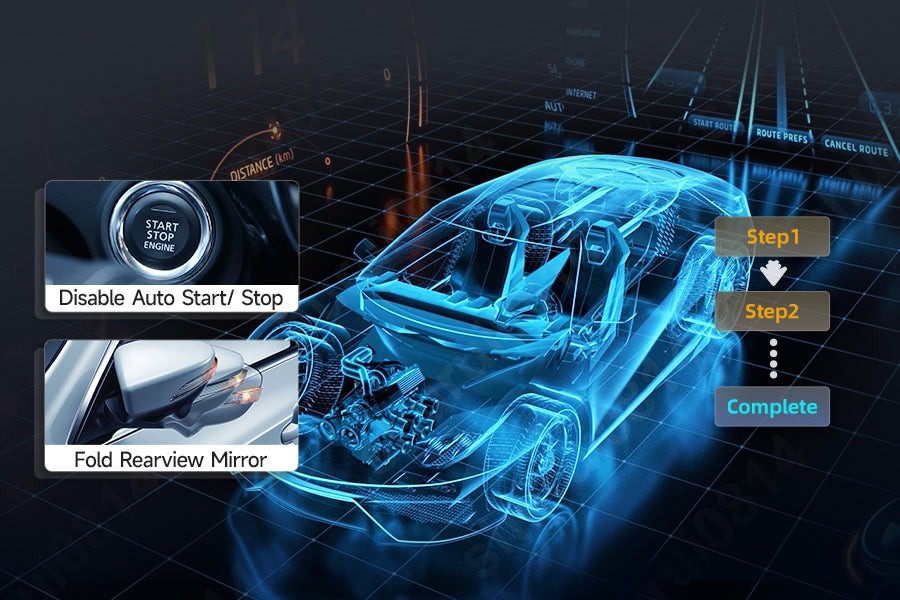Having your car’s check engine light illuminate can be stressful. While an OBD2 scanner is the go-to tool for diagnosing and clearing trouble codes, you might not always have one handy. This guide provides several effective methods to clear codes on your car without a scanner.
Why You Might Need to Clear Car Codes
Clearing diagnostic trouble codes (DTCs) might be necessary for various reasons:
- After a Repair: If you’ve fixed the underlying issue triggering the check engine light, clearing the codes confirms the repair and extinguishes the warning light.
- To Pass Emissions Tests: A lingering check engine light, even for a resolved problem, can cause you to fail an emissions test. Clearing the codes allows for a clean test.
- As a Temporary Solution: While not a permanent fix, clearing codes can temporarily turn off the check engine light, giving you time to diagnose and address the problem.
Methods to Clear Codes Without a Scanner
Here are four proven methods to clear car codes without using a scanner:
1. Battery Disconnection Method
This is the simplest and most common method:
- Safety First: Turn off the ignition completely before proceeding.
- Locate and Disconnect: Open the hood and identify the negative terminal of your car battery (usually marked with a “-” symbol). Use a wrench to carefully loosen and disconnect the negative battery cable.
- Reset Duration: Wait at least 15 minutes to allow the vehicle’s computer system to fully discharge and reset. Some mechanics recommend pressing the brake pedal for a few seconds to further drain residual power.
- Reconnect and Test: Reconnect the negative battery cable securely, ensuring a tight connection. Start the ignition and check if the check engine light has turned off.
Important Note: Disconnecting the battery will also reset other vehicle settings, such as radio presets and clock settings.
2. ECU Fuse Removal Method
This method involves temporarily disrupting power to the Engine Control Unit (ECU):
- Preparation: Turn off the ignition. Consult your vehicle’s owner’s manual to locate the fuse box (often under the dashboard or in the engine compartment) and identify the ECU fuse.
- Fuse Removal: Carefully remove the ECU fuse using a fuse puller or pliers.
- Reset Time: Wait for 15 minutes to allow the ECU to reset.
- Fuse Replacement: Reinsert the ECU fuse, ensuring it’s firmly seated in its slot.
- Verification: Turn on the ignition and check if the check engine light is off.
3. Driving Cycle Reset Method
Certain driving patterns can sometimes trigger a system reset and clear codes:
- Cold Start: Ensure the vehicle has been off for at least eight hours before starting.
- Idle Period: Let the engine idle in park or neutral for two minutes.
- Steady Speed Driving: Drive at a consistent speed of around 55 mph for 15 minutes.
- Stop-and-Go Driving: Drive in stop-and-go traffic for another 15 minutes.
- Final Idle: Idle the engine for two minutes before turning off the ignition.
Note: This method is more effective for clearing minor codes related to the emissions system. It may not work for all types of DTCs.
4. Third-Party App with Bluetooth OBD2 Adapter
While not entirely scanner-free, this cost-effective alternative utilizes a Bluetooth OBD2 adapter and a smartphone app:
- Adapter Connection: Plug the Bluetooth OBD2 adapter into your vehicle’s OBD2 port (usually located under the dashboard).
- App Setup: Download a compatible app (e.g., Torque for Android or OBD Fusion for iOS) and pair it with the adapter via Bluetooth.
- Code Clearing: Follow the app’s instructions to read and clear the diagnostic trouble codes.
Conclusion
While an OBD2 scanner remains the most reliable method for diagnosing and clearing car codes, these alternative techniques can be effective when a scanner is unavailable. Remember to consult your vehicle’s owner’s manual for specific instructions and always exercise caution when working with your car’s electrical system. By understanding these methods, you can gain valuable knowledge in managing your vehicle’s diagnostic codes and maintaining its optimal performance.


